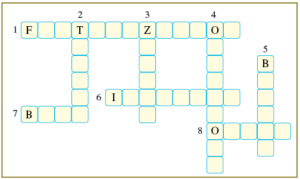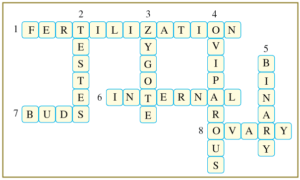Table of Contents
NCERT Solutions for Class 8 Science Chapter 9 are very helpful for students who want to score well in their exams. The solutions provide a clear and concise explanation of all the concepts covered in the chapter. The solutions are prepared by our experts keeping in mind the latest CBSE curriculum and providing detailed and easy-to-understand explanations for all the concepts discussed in the chapter.
NCERT Solution for Class 8 Science Chapter 9 is a valuable resource for students in Class 8. INFINITY LEARN provides these NCERT Solutions to assist students in gaining an understanding of the topic and effectively preparing for the examination. Students may also benefit from using NCERT Solutions Class 8th Science Chapter 9 to familiarise themselves with the syllabus and test material. All of the exercise questions in Chapter 9 of the Class 8 Science textbook are answered in NCERT Solutions. These are created by professional educators to help you understand all of the concepts covered in the chapter. Now you may get the free PDF.
INFINITY LEARN is a website that offers students free NCERT solutions and other study tools. Students looking for better solutions can obtain Class 8 Science NCERT Solutions to aid in their revision.
NCERT Solutions for Class 8 Science Chapter 9 – Free PDF Download
Looking for help with Class 8 Science Chapter 9? This chapter covers Reproduction in Animals, explaining how animals reproduce to continue their species. With our Class 8 Science Chapter 9 question answers, you can easily understand key concepts. Download the Reproduction in Animals Class 8 questions and answers in a free PDF to boost your learning!
Reproduction in Animals Class 8 NCERT Solutions Chapter 9
Ques 1. Explain the importance of reproduction in organisms.
Ans.
- Reproduction ensures the continuation of similar kinds of individuals, generation after generation.
- Reproduction is essential for the continuation of a species.

Class 8 HOTS Course
The Class 8 HOTS Course enhances critical thinking and problem-solving skills through engaging activities and advanced learning techniques, ensuring academic excellence.
Ques 2.Describe the process of fertilization in human beings.
Ans.
- In human beings fertilization takes place inside the female body (internal fertilization).
- Males eject sperms inside female bodies
- Out of millions of sperms produced, one sperm will fuse with the egg cell.
- This process in which the ovum and sperm fuse to form zygote is called
- During this process the nucleus of the sperm fuses with the nucleus of the ovum to form a single diploid cell i.e., zygote.
Ques 3. Choose the most appropriate answer :
a. Internal fertilisation occurs : ( i )
i) in female body ii) outside female body
iii) in male body iv) outside male body
b. A tadpole develops into an adult frog by the process of : ( ii )
i) fertilisation ii) metamorphosis iii) embedding iv) budding
c. The number of nuclei present in a zygote is : ( ii )
i) none ii) one iii) two iv) four
Ques 4. Indicate whether the following sentences are True (T) or False (F) :
- a) Oviparous animals give birth to young ones. ( F )
- b) Each sperm is a single cell. ( T )
- c) External fertilization takes place in frog. ( T )
- d) A new human individual developed from a cell is called gamete. ( F )
- e) Egg laid after fertilization is made up of a single cell. ( T )
- f) Amoeba reproduces by budding. ( F )
- g) Fertilization is necessary even in asexual reproduction. ( F )
- h) Binary fission is a method of asexual reproduction. ( T )
- i) A zygote is formed as a result of fertilization. ( T )
- j) An embryo is made up of a single cell. ( F )
Ques 5. Complete the crossword puzzle using the hints given below.
Across :
1. The process of the fusion of the gametes.
6.The type of fertilisation in hen.
7.The term used for bulges observed on the sides of the body of Hydra.
8.Eggs are produced here.
Down :
2.Sperms are produced in these male reproductive organs.
3.Another term for the fertilised egg.
4.These animals lay eggs.
5.A type of fission in Amoeba.

A.

Ques 6. Give two differences between a zygote and a foetus.
Ans.
| ZYGOTE | FOETUS |
| i) The fertilised egg is called zygote. | i) The stage of embryo in which all the body parts are identifiable is called a foetus. |
| ii) Zygote is single celled. | ii) Foetus is multicellular. |
| iii) It is formed by the process of fertilisation. | iii) It is formed after the multiplication of zygote. |
| iv) It has no well-defined body parts.
|
iv) It has well defined body parts like limbs and other body parts. |
Ques 7. Define asexual reproduction. Describe the two methods of asexual reproduction in animals.
Ans. The method of reproduction in which only a single parent is involved is called asexual reproduction. (Or) The reproduction that occurs without formation and fusion of gametes is called asexual reproduction.
The methods through which animals reproduce asexually are Budding, Binary fission etc.
a) Budding :
- In this method, a part of an organism starts bulging out. This is called
- This bud gradually grows and develops into a separate individual.
Eg : Hydra, Yeast etc.
b) Binary fission : In this method, the nucleus of an organism divides into two followed by division of their bodies, each part getting one nucleus and developing into a separate individual.
Eg: Amoeba, Bacteria etc.
Ques 8. In which female reproductive organ does the embryo get embedded ?
Ans. Uterus is the female reproductive organ in which embryo gets embedded.
9. What is metamorphosis ? Give examples.
Ans. The transformation of the larva into adult through drastic changes is called metamorphosis.
Eg : Silkworm, Frog etc.
Reproduction in Animals Class 8
Our website and app make it easy to get the NCERT Solutions for Reproduction in Animals Class 8 Chapter 9 PDF. This chapter in Class 8 Science explains interesting topics about how animals reproduce, with diagrams showing different ways of reproduction in animals.
The included assignments help students practice and improve their exam scores. Since Biology is mostly theory, it can be hard to remember everything. Our Class 8 Science Chapter 9 question answers use simple learning techniques to make it easier to understand and memorize key ideas from Reproduction in Animals Class 8 questions and answers.
Reproduction in Animals class 8 Chapter 9
NCERT Solutions for Class 8th Science Chapter 9 Animal Reproduction is a simple and interesting chapter. This chapter covers asexual and sexual reproduction in animals, animal reproduction modes, fertilization, and its various kinds, binary fission, hydra budding, reproductive organs, and more. The content includes all conceivable questions and answers, as well as diagrams and some enjoyable exercises. Each line of the chapter is described in such a way that any student may understand and memorize it without difficulty. All types of questions that are more likely to appear in the exam are covered in NCERT Solutions.
Related Information
- NCERT Solutions for Class 8 English
- NCERT Solutions for Class 8 Maths
- NCERT Solutions for Class 8 Social Science
Weightage of Class 8 Science Chapter-Wise Marks
Chapter 9 in Class 8 is one of the most essential topics, with the highest weightage. Every year in the tests, questions from this chapter reappear. The materials will assist you in preparing for this chapter and achieving a high score. Here’s some more information regarding the chapter’s content:
- 9.1 Define asexual reproduction (1 short)
- 9.2 Types of asexual reproduction in animals (2 long)
- 9.3 Difference between internal and external fertilization (1 long)
- 9.4 What is a metamorphosis (1 short)
- 9.5 Difference between a zygote and a fetus (2 long)
- 9.6 Binary fission in amoeba (1 short)
- 9.7 Budding in hydra (1 short)
Why is it vital to use NCERT Solutions for Class 8 Science Chapter 9?
- The answers to the problems are given in great detail, complete with pictures and explanations.
- NCERT Solutions assist you in gaining a theoretical understanding of the subject.
- Our subject specialists explain all of the answers in a straightforward manner.
- These solutions can assist you with last-minute exam preparation.
- It includes all actions that aid pupils in their preparation.
- The chapter is summarised in the NCERT Solutions.
Class 8 Science Chapter 9 Reproduction in Animals FAQs
What is NCERT Class 8 Science Chapter 9 about?
NCERT Class 8 Science Chapter 9 focuses on the process of reproduction in animals, covering various aspects of asexual and sexual reproduction.
What are the key concepts in this chapter?
This chapter introduces concepts such as asexual and sexual reproduction, modes of asexual reproduction, and differences between them.
What are the benefits of studying this chapter?
Studying this chapter will help you understand the diverse ways animals reproduce, which is essential to comprehend the animal kingdom.
Is this chapter important for exams?
Yes, reproduction in animals is a fundamental biological concept and might be asked in exams.










